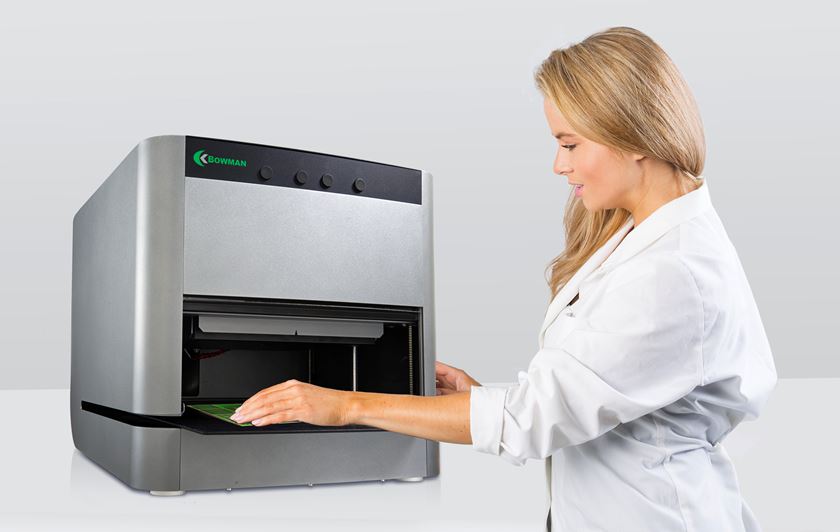Quality Finishing: Cost Cutting Measures for Abrasive Finishing!
For 40 years, Valley Chrome Plating, Inc. (Clovis, CA), has provided the trucking industry with chrome-plated bumpers, both reconditioned and new.
For 40 years, Valley Chrome Plating, Inc. (Clovis, CA), has provided the trucking industry with chrome-plated bumpers, both reconditioned and new. In 1990, when business changed, Valley Chrome discontinued the reconditioning business to concentrate on manufacturing customized chrome-plated truck bumpers. Currently, business is booming.
In the metal-finishing industry, applications often provide a fertile ground for procedure enhancements. Several years ago, a product demonstration led to a change that dramatically affected production at Valley Chrome.
Featured Content
In polishing chrome bumpers, we had been employing six polishing machines to obtain the desired production quality and quantity—until engineers found marked improvement in production time could be achieved without sacrificing quality by employing a new type of coated abrasive that could be used with our semi-automatic polishing machine that run with a PLC.
The new abrasive employs a particular composition that allows one polishing machine at Valley Chrome to do the work of several. Using a specialized granulate consisting of many abrasive grains bonded together, the grinding points literally regenerate new grinding points continually as the belt wears.
|
TABLE 1: Chatter
|
|
|
Causes
|
Corrections
|
| Imbalance to contact roll, idler, worn bearings, bearing journals, fluttery, loose or damaged belt drive components, feed roll irregularities | • Dynamically balance contact roll and idler • Redress roll • Align and mount the abrasive belt drives |
| Too rapid or shaky abrasive belt tracking oscillation | • Slow down oscillation to a non-shocking movement |
| Loose moving parts of machine such as jacks, tie bars, etc. | • Tighten all loose areas • Make certain that movement of vital parts is not impaired |
| Flimsy, curled or fluttery abrasive belt edges | • Replace abrasive belt |
| Too high or too low abrasive belt tension will cause belts to flutter and create machine vibration | • Lower or increase tension to a point where belts run smoothly |
Polishing metals to a high-gloss finish prior to chromium plating is a time-consuming procedure typically involving several stages of abrasive grain reduction. Today, as with any time, one of the keys to maintaining a competitive standing in the marketplace is to run an efficient process that maximizes both quality and output.
|
TABLE 2: Contact Roll Marks - Idler Roll Marks
|
|
|
Causes
|
Corrections
|
| Contact roll out of round | • Redress roll |
| Idler roll out of round | • Repair or replace |
| Build up of foreign matter on rolls | • Redress contact roll • Repair or change idler roll |
| Motor drive or contact roll sheave out of line V belts too tight or too loose causing pounding, leading to chatter marks | • Align sheaves • Snug up V belts to run smoothly • Use matched V belts |
The net effect of switching to the new abrasive is riddled with positives. After switching to the new abrasive, Valley Chrome realized a 65 % savings in production cost. Efficiency was gained not only by the elimination of unnecessary processes, but also through a longer-lasting product that required less machine downtime for replacement. This allowed the company to achieve a significant increase in production. A side benefit was additional floor space obtained by removing unnecessary machines from the production process.
|
TABLE 3: Abrasive Belt Splice Marks
|
|
|
Causes
|
Corrections
|
| Too stiff or too thick belt splice | • Replace with corrected belt splice |
| Too light a load (work pressure) will allow only the splice to contact the work | • Increase pressure on work, but not any more than it requires to make full contact |
|
TABLE 4: Feed Marks
|
|
|
Causes
|
Corrections
|
| Loose cones or belts on motor drive, loose chain drive coupling | • Repair or replace drive • Make snug • Should not gallop or vibrate |
| Pinch rolls, guide bars, pressure shoes incorrectly set; too much pressure or guide bars etc.; too low or too high in relation to stock removal setting | • Reset according to manufacturer’s machine set-up instructions |
Build-up on feed rolls, idler rolls or glazed feed belt |
• Clean-up and make sure all is straight/flat • Correct and/or prevent dust build-up • Dress feed belt to remove hard surface glaze |


















